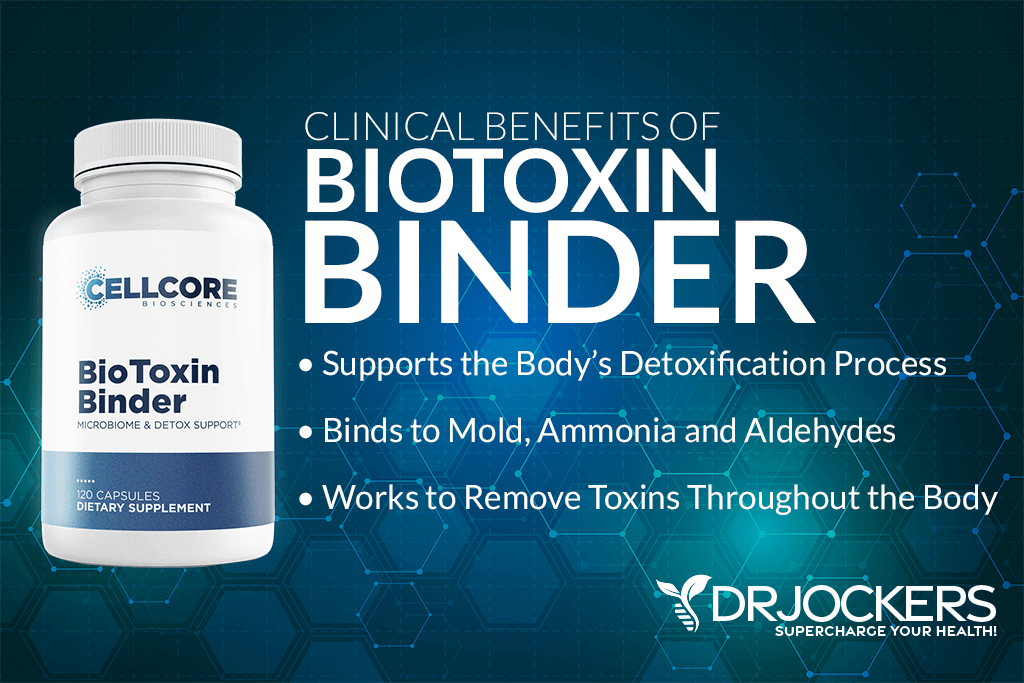 Black Mold: Indoor Air and Health Effects
Black Mold: Indoor Air and Health Effects
Are you ready for the complete truth behind toxic black mold and its impact on not only your indoor air quality (IAQ) but also the potential effects presented to your health? Indoor air quality is a top health concern, as homes are populated by an excess of organisms such as dust mites, bacteria, dander, volatile organic compounds, and worst of all mold growth.
Indoor air has been identified by the EPA as being two to five times more polluted than outdoor air and the collection of these organisms within the indoor environment can contribute substantially to this growing issue (1). Key components have exacerbated this increase of organism growth such as toxic products, poor ventilation, high temperatures and even humidity levels in your home. And with this toxic amalgam of conditions present in your home your indoor air quality can even present a risk to your overall health.
Mold, is among one of the main culprits of poor indoor air quality in personal indoor environments and should be considered and watched for as one of the main attributors to indoor air quality issues in home’s. Molds, although they are found everywhere – both indoors and outdoors – can become a problem specifically when growing indoors. Identifying mold growth , particularly black mold, and having a plan of action to implement is critical to protecting your indoor air quality and overall health.

Mold & Indoor Air Quality
This leads to the question of what mold is and how can it impact the quality of the environment. Mold is defined as a furry growth on the surface of organic matter, that is usually caused by fungus growth (2). It develops as microscopic matter that grows on the surface and spreads throughout time. When you present the desired conditions for mold in your home – warm and moist environment – you then expose your environment to mold spores that can pollute your indoor air.
Indoor air quality in recent years, has been studied and determined by the EPA and its Science Advisory Board (SAB) as being among one of the top five environmental risks to public health (3). A big contributing factor to this frightening statistic could be the presence of mold and mold spores in the home.
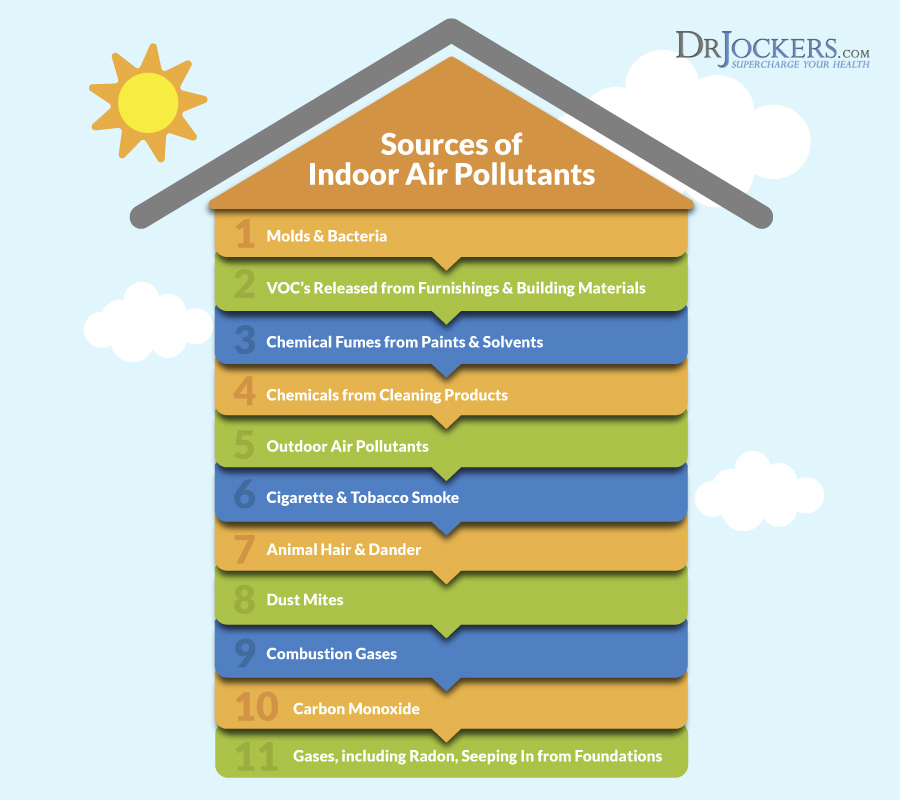
Dangers of Inhaling Mold Spores
Mold reproduces via small, nearly invisible to the eye, ‘spores’ that float in the air. The source of spores in your home can come from three different places including, from outdoor air carried in through doorways and windows; spores carried in on people, pets, or items brought into the home; and fungi that grows and produces spores indoors.
A connection between exposure to mold spores in the environment and certain health conditions has been established in recent years, as mold spores can elicit allergy and asthma symptoms when exposed or inhaled by the human body, and even in some cases can exacerbate asthma symptoms in many people.
Also, a 2009 report by the Institute of Medicine (IOM) found that there was ample proof to link indoor exposure to mold with upper respiratory tract symptoms – coughing and wheezing – in otherwise healthy people.
Among one of the most hazardous of molds, Stachybotrys Chartarum (Toxic Black Mold), presents the greatest danger as it releases potentially toxic Trichothecene into the environment. Trichothecene is a type of mycotoxin, that is labeled as one of the most notorious mycotoxins produced due to its extremely toxic nature and overall difficulty to destroy. With over 60 known types of trichothecene mycotoxins, the symptoms created by these released mycotoxins could include anything from dry eyes, fatigue, general discomfort, vomiting, diarrhea, abdominal pain, and even mental impairment.
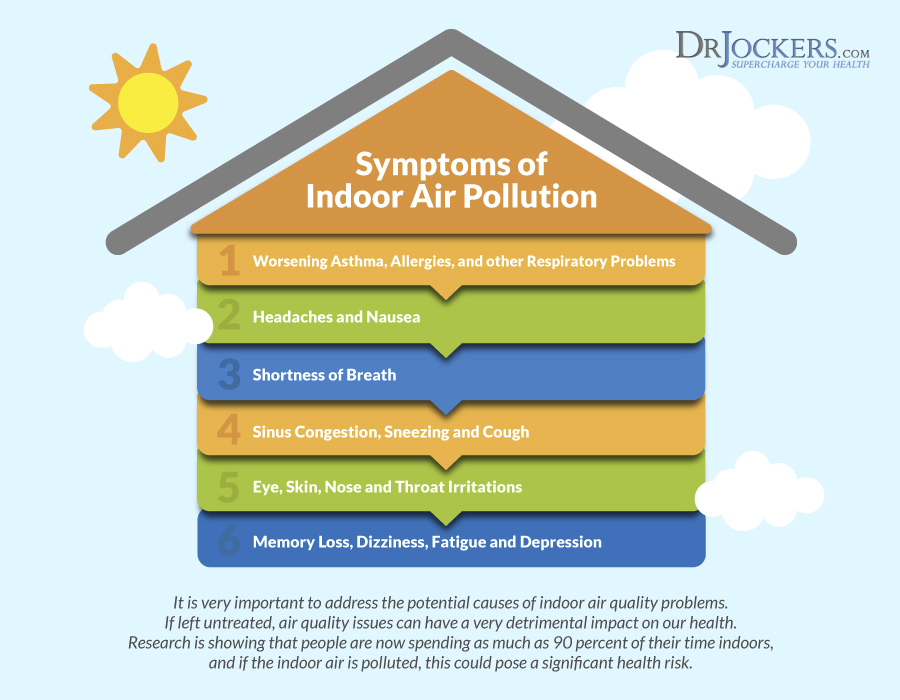
Types of Household Mold
Alternaria, Aspergillus, Cladosporium, and Stachybotrys chartarum (black mold) are among the most talked about molds that most people can probably recollect when the subject of mold is being discussed. However, there are far more than just these four types of molds in the environment, with over 100,000 different types recognized in the world (4). It may seem unfathomable that there are so many different species of molds identified, but in reality, many of these molds will never be talked about or a major point of concern for people.
The real concern lies within the four walls of your home, the mold that inhabits this environment. Identifying mold inside your home can be one of the hardest steps. In most cases, the four molds listed above are the most common species of mold, with each one possessing different qualities and distinguishable characteristics to help in the identifying process when dealing with mold in your home.
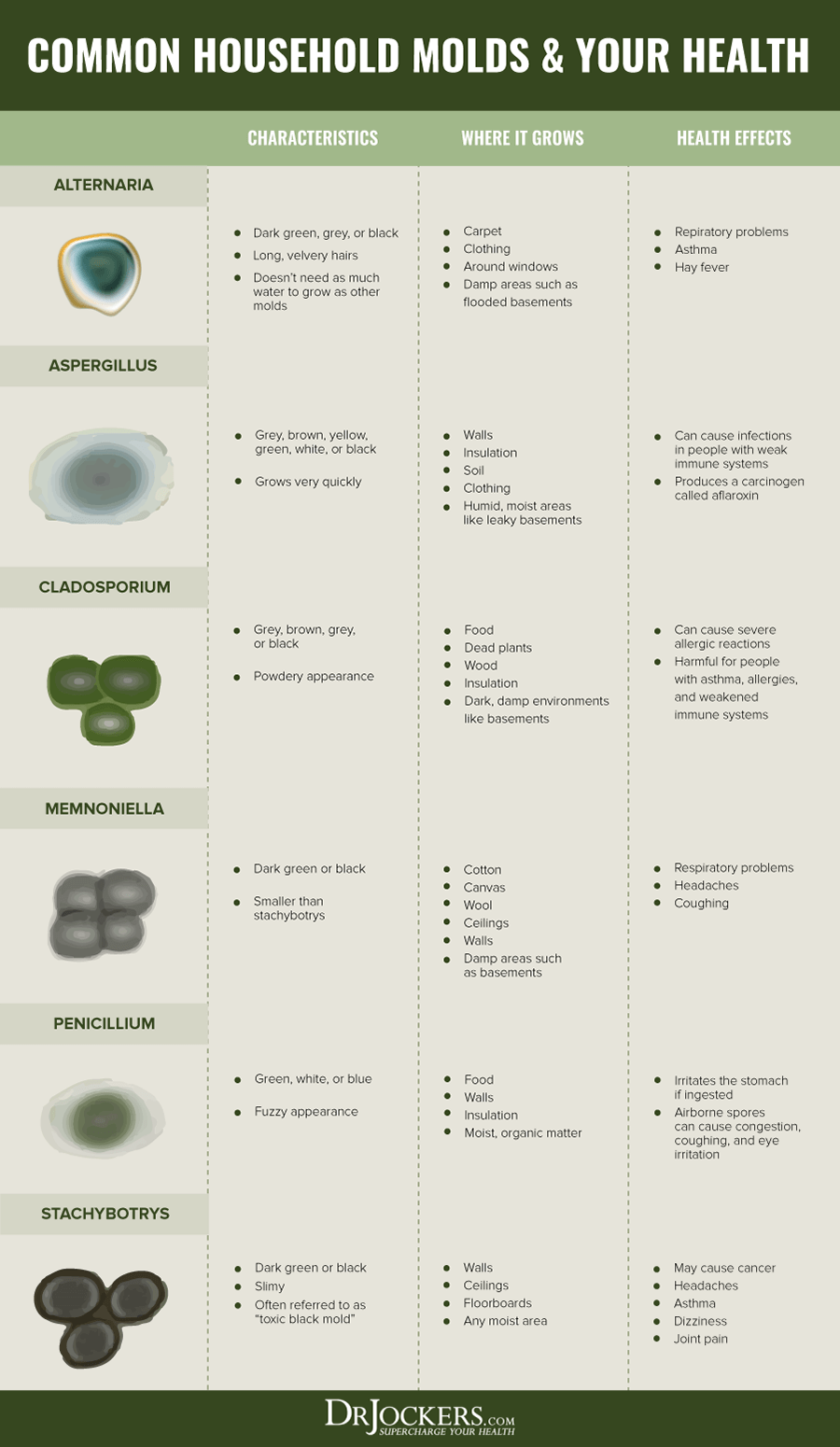
Alternaria:
- Most common form of allergenic mold.
- Typically grows wherever dampness occurs (showers, bathtubs, and below leaking sinks).
- Appears after flooding or water damage to a home.
- Causes asthma-like symptoms including the upper respiratory tract, nose and mouth.
Aspergillus:
- Over 185 species appearing in many different colors.
- An allergenic mold, commonly found in many American households.
- Can likely be found around house dust.
- Leads to symptoms such as asthma attacks, lung infections, and respiratory inflammation.
Cladosporium:
- Often found thriving in indoor materials such as fabrics, upholstery, and carpets.
- Most common outdoor mold but can be easily carried indoors.
- Typically causes allergic reactions to the eyes, nose, throat, and skin.
- Olive-green or brown pigmentation.
Stachybotrys Chartarum (Toxic Black Mold):
- Also referred to as “black mold”.
- Thrives in damp, wet areas with high humidity levels.
- Dark greenish or black, with a slimy texture.
- Produces mycotoxins that cause severe health problems to those exposed.
- Symptoms from exposure include burning sensation of the airways, chest tightening, coughing, nose bleeds, fever, and painful headaches.
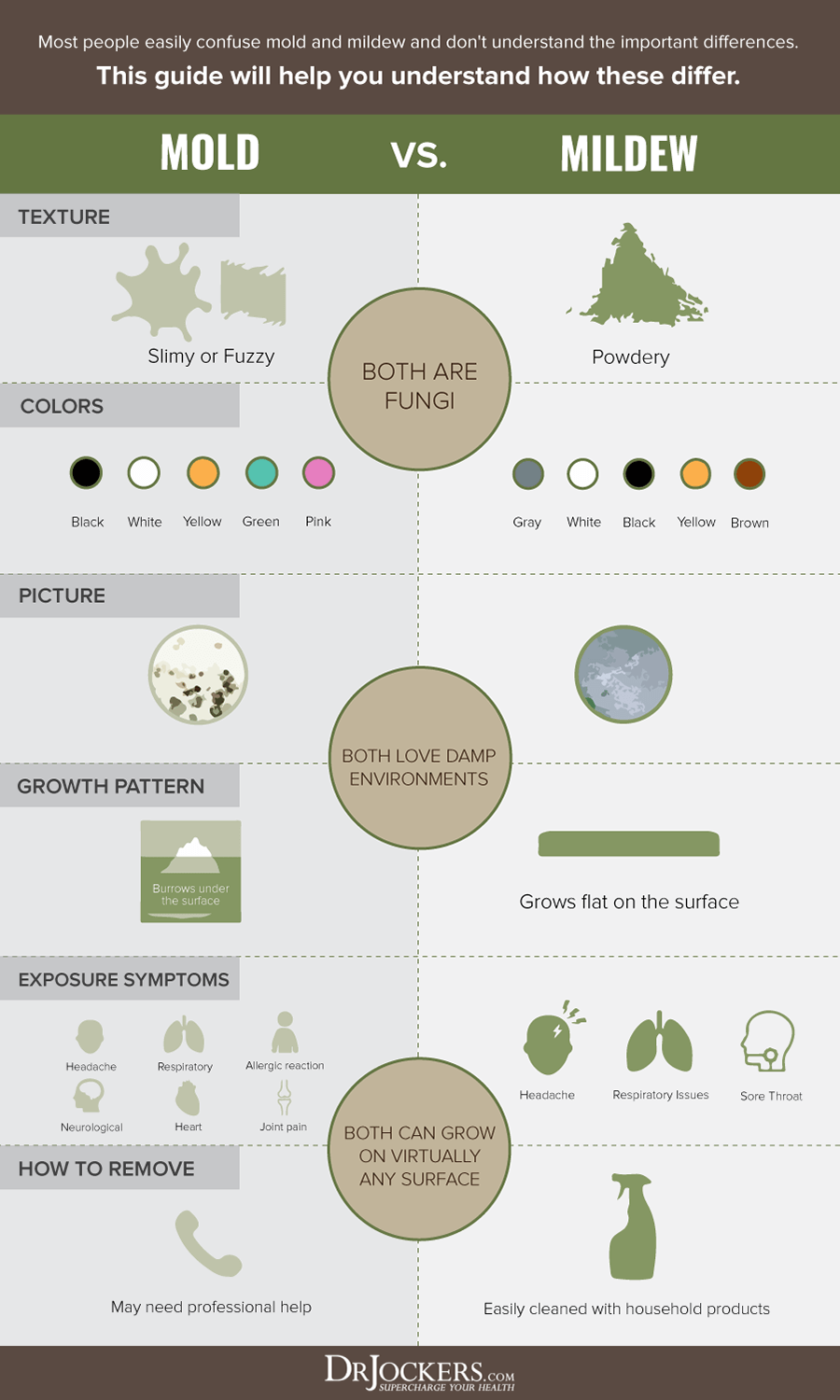
Black Mold vs Regular Mold
Mold comes in all sizes, shapes, and colors, all possessing different characteristics and potential hazards to the environment. When discussing molds and how each type of mold compares to one another, the main contrasting types include common indoor and outdoor molds and toxic potentially dangerous molds such as toxic black mold. In comparing both black mold and normal everyday mold, there are some main distinguishing factors that separate these two categories.
Black mold, unlike common household mold, produces toxins into the environment that pollute the air and increase the level of danger for those in the environment. It produces metabolic by-products known as mycotoxins that are especially potent and, in many cases, have been linked to serious health conditions in humans (5).
Furthermore, mold is relatively harmless when found in nature and mostly harmless when present in the indoor environment. But toxic black mold is highly dangerous when occurring inside the confines of an airtight space, with an overwhelming amount of moist cellulosic materials that can accumulate toxic chemicals in high concentrations.
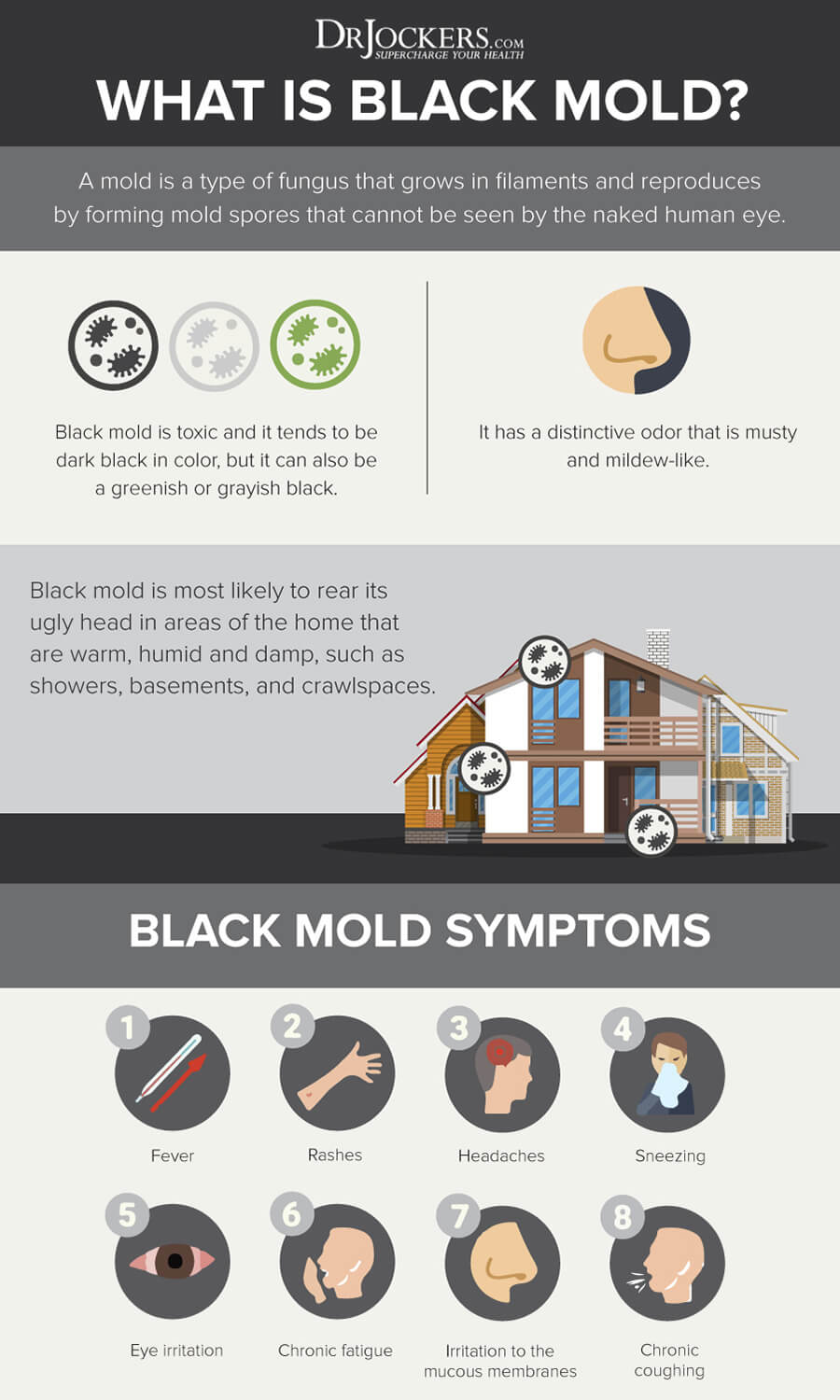
Toxic Black Mold Symptoms
Mold exposure can present different reactions to each person depending on health conditions and the type of mold present in the environment. Typically, people with allergies may be more sensitive to mold and those with immune suppression or underlying lung disease are more susceptible to fungal infections (6). And when you are faced with exposure to Toxic Black Mold, symptoms can be extensive and drastic to overall health. Symptoms of toxic black mold include the following:
- Respiratory symptoms (sneezing, rhinorrhea, nasal stuffiness, dyspnea, and wheezing)
- Neurological symptoms (short-term memory loss, imbalances, and dizziness)
- Immunological symptoms (hypersensitivity to molds, food, and chemicals)
- Gastrointestinal symptoms (bloating, gas, and cramps)
- Musculoskeletal symptoms (muscle and joint aches and tenderness)
- Cardiovascular symptoms (bruising, hemoptysis, and petechiae)

Eliminating Mold Spores in the Air
Indoor air quality and mold can go hand in hand. Mold and mold spores both adversely affect indoor air quality as both can create pollutants in the environment. As mold starts to develop on the surfaces of your home, mold spores will be released from the original host as a means of reproducing.
These tiny mold spores are often toxic to inhale or ingest. In low levels, molds and mold spores are fairly harmless, but if the levels increase they can negatively impact your health. This is especially true for those with allergies, asthma, and respiratory conditions, as well as those with suppressed immune systems.
Properly removing the mold from your home is critical in not only protecting your health but also in improving overall indoor air quality in your personal environment. In most cases, a mold remediation specialist is a necessary. After you have had a specialist come out and appropriately eradicate the mold from the surfaces of your home, you still must treat the air to completely eliminate all residual mold and mold spores contained within your home’s air. The EnviroKlenz Mobile UV Model is a great solution for this.
The EnviroKlenz Technology Works
EnviroKlenz utilizes a patented earth mineral technology that is highly reactive to a broad spectrum of chemicals and odors and works to break them down without releasing any by-products. The EnviroKlenz Mobile UV Model also uses a hospital-grade HEPA filter for particulate removal. Finally, it utilizes UVC (ultraviolet germicidal radiation) lights to kill all microorganisms such as mold spores collected in the air system.
The truth behind toxic black mold and your indoor air quality is a scary reality. The potential dangers present in the environment where toxic black mold has grown are often overlooked. Now you have an effective solution for getting these toxins out your air while inhibiting any kind of regrowth after remediation.
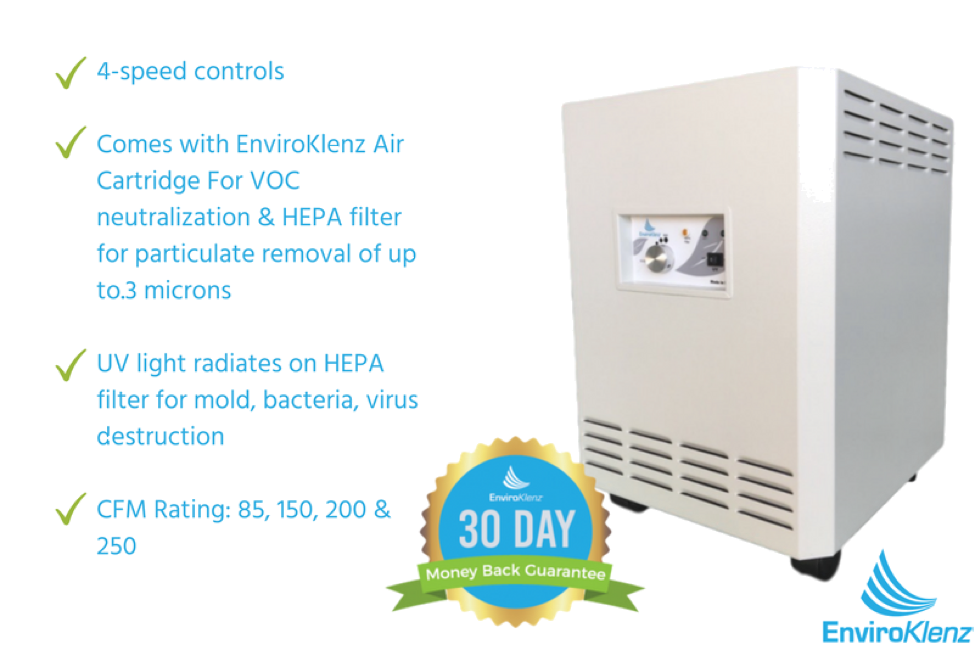
Functional Testing for Mold Exposure
Now that you understand the damages of having mold in your home, we must understand how to detect it within our bodies. When mold toxins are ingested or inhaled they can create a number of symptoms.
These range from mood disorders, chronic inflammation, chronic infections, brain fog, depression, anxiety, and more. The best test I have found for detecting mold toxins in the body is the GPL-MycoTOX Profile. This lab screens for 7 different mold toxins from four common species of mold in a simple one-time urine sample.
Oftentimes, this is a major factor that is holding people back from being healthy after they’ve done everything else right.
Getting Mold Out of Your Body
If you find that you have significant levels of mold toxins in your body, it is likely in your home or workplace. The most important step for eliminating this is to clean the environment, remediate, or move if necessary.
For further support, it helps to understand how to improve your body’s ability to remove these toxins from the body before they cause too many problems. Hydrating your body very well, eating a clean diet full of detoxification supporting foods, doing periods of fasting and infrared sauna are all very helpful strategies to apply.
From a supplement perspective, the best way to deactivate and eliminate mold from the body is to boost glutathione production, support the body’s detoxification systems, and use activated charcoal to bind toxins in the gut. This is my personal protocol:
ThyroLiver Protect: A combination of selenium, milk thistle extract, Alpha-Lipoic Acid, and N-Acetyl-L-Cysteine. This combination assists liver detoxification while supporting the production of glutathione. Taking 1-2 caps, 2 times daily helps your liver neutralize and process the mold spores.
Super Glutathione: For tough cases, extra glutathione can be necessary. This is an acetylated form that is able to be absorbed by the digestive tract unlike many others on the market. I recommend 1-2 caps – 2 times daily. This is especially important if you are suffering with a lot of symptoms from mold exposure.
Activated Charcoal: When detoxification systems are upregulated, many toxins are released into the digestive tract. If they are not bound by something like charcoal, they are given the opportunity to reabsorb and cause more problems. Using 1-2 caps of charcoal between meals and immediately before bed is a great strategy.
BioToxin Binder: This product contains a special form of carbon that has a greater binding ability. It also contains wild-crafted yucca root and fulvic acid. It’s formulated specifically to support binding biotoxins like mold, ammonia and aldehyde systemically. Take 1–2 caps – 2 times daily.
Inflammation Crushing Ebundle
The Inflammation Crushing Ebundle is designed to help you improve your brain, liver, immune system and discover the healing strategies, foods and recipes to burn fat, reduce inflammation and Thrive in Life!
As a doctor of natural medicine, I have spent the past 20 years studying the best healing strategies and worked with hundreds of coaching clients, helping them overcome chronic health conditions and optimize their overall health.
In our Inflammation Crushing Ebundle, I have put together my very best strategies to reduce inflammation and optimize your healing potential. Take a look at what you will get inside these valuable guides below!



